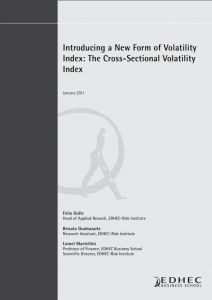

Introducing a New Form of Volatility Index: The Cross-Sectional Volatility Index
This paper introduces a new form of volatility index, the cross-sectional volatility index. Through formal central limit arguments, it shows that the cross-sectional dispersion of stock returns can be regarded as an efficient estimator for the average idiosyncratic volatility of stocks within the universe under consideration. Among the key advantages of the cross-sectional volatility index measure over currently available measures are its observability at any frequency, its model-free nature, and its availability for every region, sector, and style of the world equity markets, without the need to resort to any auxiliary option market. A revisited version of this paper was published in Bankers, Markets & Investors, March 2012.
Author(s):
Summary:
This paper introduces a new form of volatility index, the cross-sectional volatility index. Through formal central limit arguments, it shows that the cross-sectional dispersion of stock returns can be regarded as an efficient estimator for the average idiosyncratic volatility of stocks within the universe under consideration. Among the key advantages of the cross-sectional volatility index measure over currently available measures are its observability at any frequency, its model-free nature, and its availability for every region, sector, and style of the world equity markets, without the need to resort to any auxiliary option market. A revisited version of this paper was published in Bankers, Markets & Investors, March 2012.
Register to download PDF
Register/Log in| Type : | Working paper |
|---|---|
| Date : | 14/01/2011 |
| Keywords : |
Indexes and Benchmarking |

